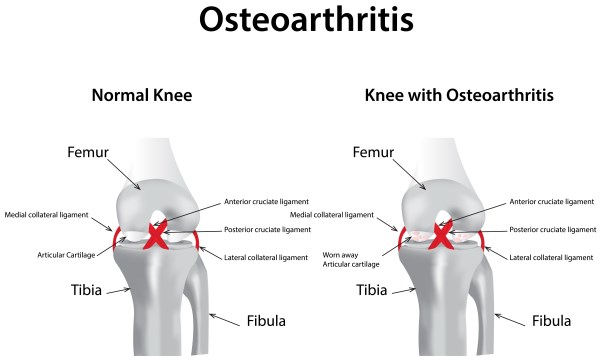
Knee pain is one of the commonest problem everyone suffers during their lifetime. The cause of the pain could be varied ranging from acute injuries to complications of medical conditions. Delivering the 262nd Monthly Health Lecture of the Public Garden Walkers' Association on “Healthy Knees: Knee Pain - New Treatment”, Dr K J Reddy, Senior Consultant Joint Replacement & Arthroscopic Surgeon, Apollo Hospitals, Jubilee Hills, said, knee pain can be caused by a sudden injury, an overuse injury or by an underlying condition, such as arthritis.
The pain could be localized to a specific area of the knee or be diffused throughout the knee. It is often accompanied by physical restriction. A thorough physical examination will usually establish the diagnosis of knee pain, the treatment depends on the underlying cause. The prognosis of knee pain is usually good although it might require surgery or other interventions.
One of the major causes of knee pain is Osteoarthritis and approximately 7.35% of Indian population is estimated to be suffering from the ailment. Osteoarthritis commonly known as wear-and-tear arthritis, is a condition in which the natural cushioning between joints - cartilage, wears away. It is the failure of repair mechanism.
When this happens, the bones of the joints rub more closely against one another with less of the shock-absorbing benefits of cartilage. The rubbing results in pain, swelling, stiffness, decreased ability to move and, sometimes the formation of bone spurs. The common risk factors for osteoarthritis are ageing, obesity, Knee injury/trauma, previous knee surgery/injury, repetitive stress injuries, playing high impact sports, repetitive episodes of gout, septic arthritis, occupational bending and lifting etc.
The high prevalence of the problem in India is due to our habits like squatting, sitting on the ground, climbing stairs, using Indian toilets, obesity etc. The primary goals of treating osteoarthritis of the knee are to relieve the pain and return mobility. The treatment would typically involve a combination of weight reduction; muscle strengthen exercises around the knee to make the joint more stable and reduce pain; usage of pain relievers and anti-inflammatory drugs; injection of corticosteroids or hyaluronic acid into the knee; administering some alternative therapies like topical creams, glucosamine and chondroitin and physical and occupational therapy.
In case the above treatment options don't mitigate the condition or the condition is chronic, surgery will be the way forward. The most suitable surgical treatment from amongst the following will be opted considering the stage at which the ailment is, the age and sex of the patient etc.
Arthroscopy is often used on younger patients, aged under 55, in order to postpone more serious surgery. The surgery is performed through small incisions by using a small telescope (arthroscope) and other small instruments. The surgeon uses the arthroscope to see into the joint space. Once there, he removes the damaged cartilage or loose particles, cleans the bone surface, and repairs other types of tissue if those damages are discovered.
Regenerative stem cell therapy is beneficial for all osteoarthritis patients. It allows the body to heal damaged joints with the patient's own stem cells, reducing the risk of rejection. A protein is used to attract the necessary stem cells to the joint and regenerate cartilage.
Joint replacement surgery, or arthroplasty, is a surgical procedure in which joints are replaced with artificial parts made from metals or plastic. The replacement could involve one side of the knee or the entire knee. Joint replacement surgery is usually reserved for people over age 50 with severe osteoarthritis.
The surgery may need to be repeated later if the joint wears out again after several years, but with today's modern advancements most new joints will last over 20 years. The surgery has risks, but the results are generally very good.
Indian population, estimated to suffer, osteoarthritis